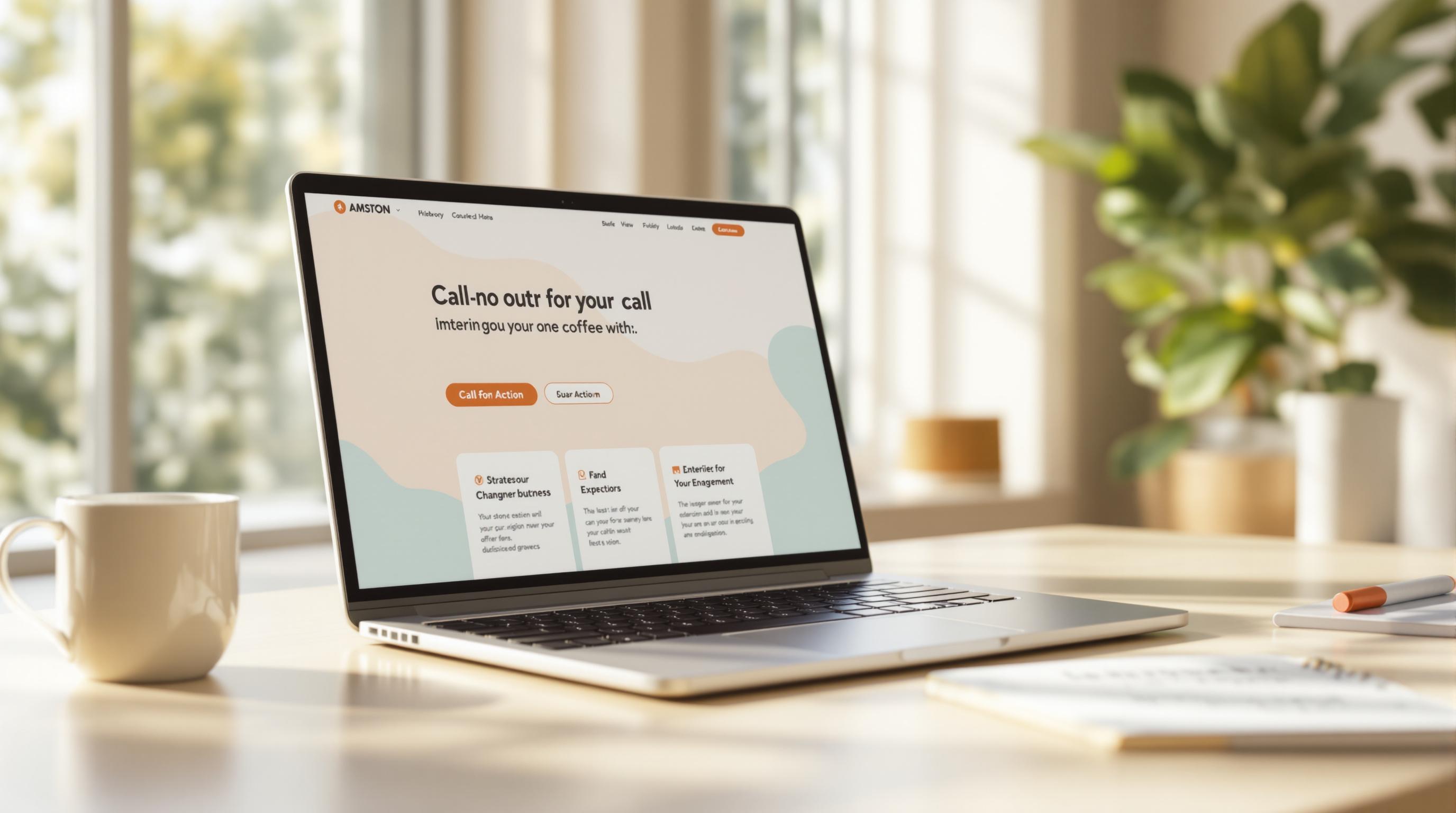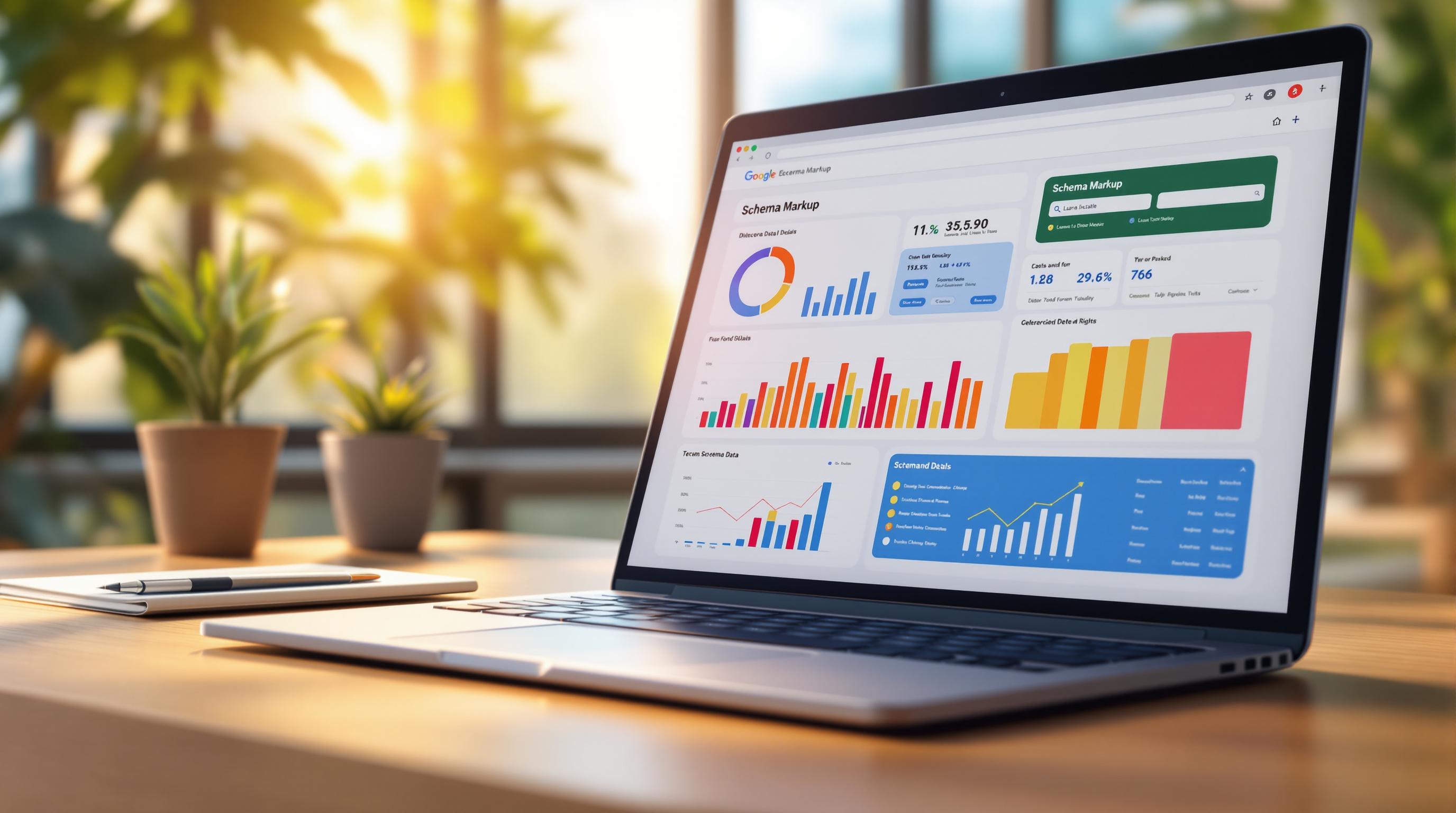Google penalties can drastically harm your website's traffic and rankings. They occur when your site breaks Google's Webmaster Guidelines, either through manual actions (flagged by Google staff) or algorithmic penalties (triggered by updates to Google's algorithms).
Key Takeaways:
- Common Causes: Duplicate content, manipulative link practices, technical violations, or poor user experience.
- Warning Signs: Sudden traffic drops, ranking declines, Search Console alerts, or indexing issues.
- How to Check: Use tools like Google Search Console, SEMrush, or Ahrefs Site Audit to identify penalties.
- Recovery Steps:
- Conduct an SEO audit to fix content, technical, and backlink issues.
- Prioritize critical fixes like manual actions, site speed, and toxic backlinks.
- Monitor recovery progress using Google Search Console and analytics tools.
- Prevention Tips: Follow Google's guidelines, create quality content, and conduct regular site reviews.
Quick Recovery Timeline:
| Phase | Duration | Key Activities |
|---|---|---|
| Initial Assessment | 1 week | Audit and document issues. |
| Critical Fixes | 2–3 weeks | Resolve major violations. |
| Quality Improvements | 4–6 weeks | Update content and address technical SEO. |
| Monitoring | 4–8 weeks | Track metrics and adjust as needed. |
Pro tip: Recovery can take 2–3 months, so stay consistent and patient. If overwhelmed, consider professional SEO services like BrightSide SEO to streamline the process.
Recover From ANY Google Algorithm Update
How to Check for Penalties
Figuring out if your website has been hit with a Google penalty requires a methodical approach. You’ll need to use several tools and analyze key metrics to get a clear picture.
Search Console Manual Action Reports
The quickest way to check for manual penalties is through Google Search Console. Head to the "Security & Manual Actions" section and click on "Manual Actions." If it says "No issues detected", you're in the clear for manual penalties. If there's a notice, it will include:
- Details about the type of violation
- The specific pages or sections affected
- Suggested actions to fix the issue
- An option to submit a reconsideration request
Once you've checked here, move on to your traffic and rankings for other potential red flags.
Traffic and Ranking Changes
Algorithmic penalties don't come with direct notifications, so you'll need to analyze your traffic and rankings. Look for unusual patterns in these metrics:
| Metric | Normal Range | Warning Signs |
|---|---|---|
| Daily Organic Traffic | ±15% fluctuation | A sustained drop of over 30% for 7+ days |
| Keyword Rankings | Stable in top 3–5 | A sudden drop of 10+ positions |
| Click-Through Rate | 2–5% average | Below 1% for pages that used to perform well |
Penalty Detection Tools
If traffic or ranking changes suggest a problem, use specialized tools to dig deeper. These can help confirm whether penalties are to blame.
-
SEMrush Traffic Analytics
This tool tracks daily traffic trends and highlights sudden drops that might align with algorithm updates. It also provides search visibility scores and competitor comparisons for added context. -
Ahrefs Site Audit
Ahrefs scans your site for technical issues that could lead to penalties. It checks for broken backlinks, duplicate content, crawl errors, and structural problems. -
BrightSide SEO Penalty Checker
This tool combines multiple data points, such as historical traffic trends, backlink quality, and content duplication checks, to identify potential penalty triggers.
Building Your Recovery Strategy
After facing a Google penalty, it's crucial to develop a clear recovery plan. A well-organized approach helps you track progress and address key issues effectively.
SEO Audit Steps
Start with a detailed technical audit to identify problem areas related to the penalty:
| Audit Area | Elements | Priority Level |
|---|---|---|
| Content Quality | Duplicate content, thin pages, keyword stuffing | High |
| Technical Issues | Site speed, mobile usability, crawl errors | High |
| Link Profile | Toxic backlinks, unnatural link patterns | Medium |
| User Experience | Bounce rates, page load times, mobile optimization | Medium |
| Schema Markup | Implementation errors, missing required fields | Low |
Use tools like Screaming Frog or BrightSide SEO's audit suite to perform these checks. Document every issue you find, then prioritize them based on their impact and how challenging they are to resolve.
Issue Priority List
1. Critical Issues (1–2 weeks)
Focus on the most urgent problems first, such as:
- Manual actions from Google
- Major ranking drops
- Core web vital failures
- Security vulnerabilities
2. High-Impact Issues (2–4 weeks)
Next, tackle issues that heavily influence user experience and site performance, including:
- Mobile responsiveness errors
- Major content quality problems
- Significant technical SEO flaws
- Cleaning up toxic backlinks
3. Supporting Improvements (4–8 weeks)
Finally, address lower-priority tasks that still contribute to site health:
- Minor content updates
- Optimizing schema markup
- Improving internal linking
- Fine-tuning site speed
Once priorities are set, create a timeline that aligns with your resources and goals.
Recovery Timeline
Your recovery plan should follow a structured timeline:
| Phase | Duration | Key Activities |
|---|---|---|
| Initial Assessment | 1 week | Complete the audit and document issues |
| Critical Fixes | 2–3 weeks | Resolve core violations |
| Quality Improvements | 4–6 weeks | Update content and address technical issues |
| Monitoring | 4–8 weeks | Track progress and adjust as needed |
| Fine-tuning | Ongoing | Refine strategy based on performance |
The time needed for recovery depends on the type of penalty and the complexity of your site. For instance, resolving manual actions for unnatural links might take 2–3 months, while improving content quality could require 4–6 months of consistent effort.
Use Google Search Console and analytics tools to monitor your progress. Set clear milestones and key performance indicators (KPIs) to ensure your recovery stays on track.
sbb-itb-d7fe25c
Fix and Recover
Take action and implement fixes without delay.
Content Quality Fixes
Evaluate your content to identify and address pages that aren't performing well:
| Content Issue | Fix Action |
|---|---|
| Thin Content | Add more depth or combine similar pages |
| Duplicate Content | Remove duplicates or use canonical tags |
| Keyword Stuffing | Rewrite content to sound natural |
| Poor User Intent | Adjust content to match search intent |
Technical SEO Repairs
Address technical problems to improve your site's performance:
1. Core Web Vitals
- Bring Largest Contentful Paint (LCP) under 2.5 seconds.
- Reduce First Input Delay (FID) to less than 100 milliseconds.
- Keep Cumulative Layout Shift (CLS) below 0.1.
2. Mobile Optimization
- Use responsive design for better usability.
- Optimize image sizes and formats for faster loading.
- Eliminate render-blocking JavaScript.
- Test your site on various devices to ensure functionality.
3. Site Architecture
- Fix broken internal links.
- Use a clear and logical URL structure.
- Update your XML sitemaps regularly.
- Fine-tune your robots.txt file for proper crawling.
Once technical issues are addressed, shift your focus to cleaning up your backlink profile.
Backlink Clean-up
Take steps to remove harmful backlinks:
| Phase | Action Items | Tools/Methods |
|---|---|---|
| Analysis | Use tools to find harmful backlinks | Google Search Console, Ahrefs |
| Disavowal | Submit a disavow file for toxic links | Google's Disavow Tool |
To recover effectively, stay consistent in improving content, fixing technical SEO issues, and managing backlinks.
Track Your Recovery
Once you've implemented fixes, it's time to monitor your progress. This helps confirm improvements and spot any lingering issues.
Key Metrics to Watch
Keep an eye on these important indicators:
| Metric Category | Key Indicators | Goals |
|---|---|---|
| Traffic Metrics | Organic sessions, bounce rate, time on site | Restore to pre-penalty levels |
| Search Visibility | Keyword rankings, SERP positions, featured snippets | Monitor position changes regularly |
| Technical Health | Core Web Vitals, crawl stats, indexing status | Align with Google's requirements |
| User Engagement | Pages per session, conversion rates, click-through rates | Aim for ongoing improvement |
These metrics will guide your choice of monitoring tools.
Tools for Monitoring Progress
Here are some tools to help track your recovery:
-
Google Search Console
Use this daily to check:- Index coverage status
- Manual action reports
- Core Web Vitals
- Click-through rates on key pages
-
Google Analytics
Review these metrics weekly:- Organic traffic trends
- Landing page performance
- User behavior flow
- Conversion tracking
The insights from these tools will help you refine your approach as needed.
Adjusting Your Strategy
Use your data to fine-tune your recovery efforts:
1. 30-Day Check-In
After the first month, evaluate your progress. If organic traffic hasn't improved:
- Double-check technical fixes are fully implemented.
- Ensure manual actions are completely resolved.
- Reassess content quality improvements.
- Verify that backlink cleanups are effective.
2. 60-Day Checkpoint
If rankings are still stagnant after 60 days:
- Conduct another technical audit.
- Refresh your content strategy.
- Expand your keyword targeting.
- Think about consulting SEO professionals.
3. 90-Day Decision Point
If recovery is still slow by this point, it's time for bigger changes:
- Revamp your content architecture.
- Introduce new technical solutions.
- Rethink your link-building strategy.
- Scale up your recovery efforts to address persistent issues.
Avoid Future Penalties
It's better to prevent penalties than to spend time fixing them later. Use these steps to protect your website and stay in line with Google's rules.
Stay Updated on Google Guidelines
Keep an eye on Google's updates to ensure you're aware of any changes to their algorithms. Check these resources regularly:
- Google Search Central Blog
- Search Console Notifications
- Google Webmaster Guidelines
- Google Search Liaison on Twitter
Follow SEO Best Practices
Use these SEO strategies to maintain a healthy website:
- Create original, detailed content that directly addresses what users are searching for.
- Improve your site's performance by focusing on Core Web Vitals, using canonical tags, and maintaining a clear URL structure.
- Build links naturally - avoid buying links or participating in link schemes.
Conduct Routine Site Reviews
Regular reviews help you catch and fix problems before they become major issues. Here's a suggested schedule:
- Weekly: Use Search Console to check for manual actions, security issues, mobile usability problems, and overall performance.
- Monthly: Scan for broken links and 404 errors, review your robots.txt and sitemap, check structured data, and analyze server response times.
- Quarterly: Update outdated content, assess your backlink profile, and review user experience metrics.
Consistent monitoring ensures your site stays compliant and adapts quickly to changes. If managing this process feels overwhelming, companies like BrightSide SEO (https://brightsideseo.com) offer expert SEO audits, ongoing monitoring, and maintenance services to help you avoid penalties.
Conclusion: Recovery Success Steps
Recovery Tips
Bouncing back from an algorithm penalty requires a clear plan. Here are some key steps to guide you:
- Keep a record of every change: Track all technical fixes, content updates, and backlink removals. This will help you pinpoint what’s working.
- Tackle the most pressing issues first: Prioritize areas that impact user experience and search visibility, like improving content quality, addressing technical SEO problems, and cleaning up your backlink profile.
- Be patient: Recovery can take 2–3 months. Use tools like Google Analytics and Search Console to monitor your progress.
If you need extra help, consider professional services to make the process smoother and more efficient.
BrightSide SEO Services

For businesses looking for expert help, BrightSide SEO specializes in penalty recovery. Their proven track record makes them a reliable choice for navigating penalties and regaining lost ground.
"I have nothing but great things to say about Jeremy. He is an ambitious, creative self-manager who delivers real value for business and those he works with. His unique skills and insights for SEO and SEM provided a great value in helping grow our brand awareness and sales conversions within the highly competitive consumer product gaming market." - Greg VandeVisser, Chief Marketing Officer
BrightSide SEO offers a range of services designed to address penalties effectively:
- Detailed Site Audits: Identify the root causes of penalties through in-depth technical analysis.
- Custom Recovery Strategy: Create tailored plans with prioritized fixes.
- Implementation Support: Get hands-on help to execute the necessary changes.
- Progress Monitoring: Regularly track metrics like keyword rankings and overall site performance.
- Preventative Maintenance: Provide monthly reporting and ongoing updates to avoid future penalties.
Their clients have seen website traffic grow by over 50% in just a few months, with some e-commerce businesses reporting sales increases of more than 30%. For quick, targeted assistance, BrightSide SEO also offers 1‑Hour SEO Work Camps starting at $149. These sessions help identify critical issues and outline actionable next steps.


